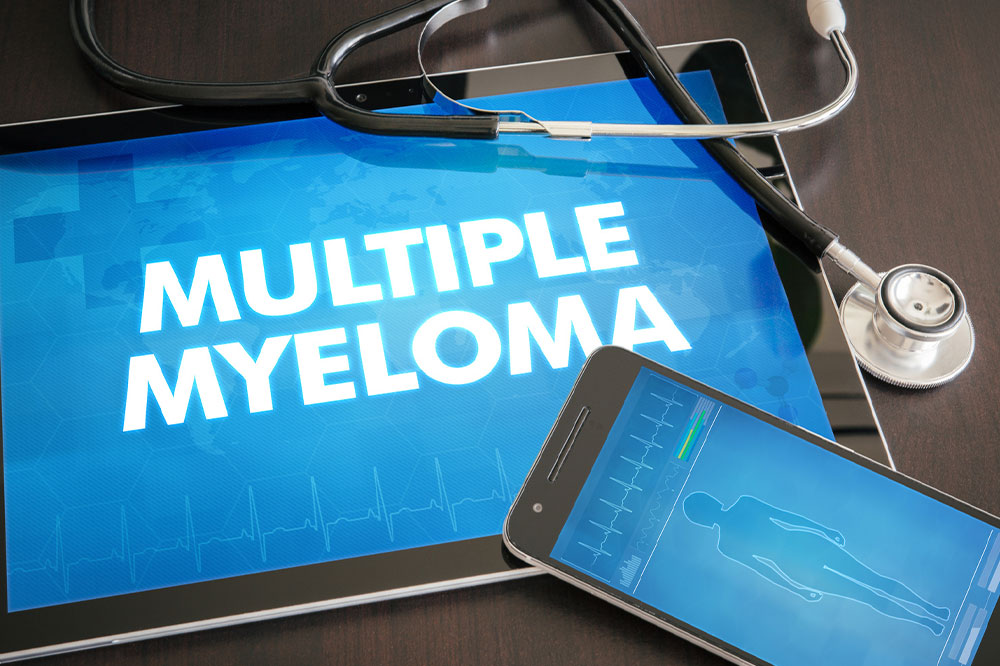
12 Signs That May Indicate Multiple Myeloma
Multiple myeloma (MM) refers to cancer of the plasma cell, a type of white blood cell in the body. These cancerous plasma cells develop in the bone marrow and outnumber healthy cells. While some patients with the health condition may experience signs and symptoms immediately, some may not exhibit any symptoms for a long time. Here are some signs and symptoms of MM, together with diagnostic procedures and nutrition tips:
Signs and symptoms of multiple myeloma
Osteoporosis or bone brittleness
Since MM cells develop in the bone marrow, they typically result in bone damage, causing bone brittleness and osteoporosis. The pain often aggravates with movement or at night and can cause severe discomfort.
Anemia
Although not all cases of anemia may indicate MM, anemia is a common symptom of the health condition. The cancerous myeloma cells tend to outnumber healthy red blood cells, leading to low blood count. When accompanied by other symptoms, anemia may also be an early warning sign of MM.
Hypercalcemia
Hypercalcemia is regarded as the most common complication linked to MM. Increased calcium levels can result from bone damage, triggering various other health issues, including blood chemical imbalance.
Blood clots
Hyperviscosity, or thickening of the blood, is a common symptom among patients with MM. This symptom can lead to the formation of blood clots, blocking the blood flow to the parts of the body – such as the arms, legs, and groin – where these clots have developed.
Low platelet count
As the number of cancerous plasma cells multiplies in the bone marrow, the bone marrow cannot produce healthy cells efficiently. Consequently, many patients with the condition have low platelet counts.
Loss of appetite
Hypercalcemia due to MM can lead to nausea and vomiting, causing acute loss of appetite.
Kidney damage
About 20-40% of patients with MM suffer from kidney failure of varying degrees. Such problems occur because of the uncontrollable growth of plasma cells, which release large concentrations of antibodies. These antibodies can cause severe kidney problems when released into the bloodstream.
Fatigue
Extreme fatigue among MM patients typically results from related health issues, such as kidney damage, anemia, and loss of appetite. Patients may constantly feel tired despite getting sufficient sleep.
Disturbed sleep
Many individuals with MM experience sleep disturbance, including insomnia. Such sleep issues may be caused by various factors, including side effects of treatment, poor mental health due to the disease, and bone pain and discomfort.
Infections
Immunodeficiency triggered by MM can often lead to infections. Infections can also be caused as side effects of treatment administered to heal from the condition.
Unusual fractures
Bone brittleness due to MM can cause unusual fractures even with basic movements. Such fractures are signs that the disease is progressing and should not be ignored.
Shortness of breath
Shortness of breath or dyspnea is another symptom of MM and is caused by M proteins and cancerous plasma cells generated in the body. Individuals with MM may experience the inability to catch their breath, which can cause severe distress.
Multiple myeloma diagnosis
Doctors may prescribe various tests and procedures to diagnose multiple myeloma. Some of these procedures are as follows:
Blood tests
Blood tests can help identify the presence of M proteins produced by the cancerous plasma cells in MM patients. Beta-2-microglobulin is another abnormal protein found in patients with this condition and can be detected through a blood test.
Bone marrow examination
A sample of one’s bone marrow may be extracted for examination and diagnosis of MM. In this procedure, a needle is inserted into a bone, and the extracted sample is examined for the detection of myeloma cells. Certain tests, such as fluorescence in situ hybridization (FISH), may also be performed to check for genetic mutations.
Urine tests
A urine test may also be carried out to detect M proteins, which are known as Bence Jones proteins when found in urine.
Imaging tests
Imaging tests, such as X-rays, CT scans, and PET scans, may be performed to check for bone deformities and damage.
Food and nutrition tips for patients with multiple myeloma
Have iron-rich foods
Many patients with MM have iron deficiency due to the outnumbering of cancerous plasma cells over healthy cells. Iron-rich foods, including leafy green vegetables, dates, strawberries, poultry, lentils, sardines, eggs, and beans, can help cope with anemia symptoms and increase blood count.
Include foods high in vitamin C
Vitamin C is essential for adequate iron absorption by the body. Thus, patients with MM should consume foods rich in vitamin C, including citrus fruits, brussels sprouts, broccoli, tomatoes, and bell peppers.
Avoid high-potassium foods
High-potassium foods are a no-no for persons with kidney diseases. Many patients with MM suffer from kidney damage; therefore, foods high in potassium, such as bananas, jackfruits, cantaloupes, sweet potatoes, and avocados, should be limited or avoided while healing from MM.
Restrict foods with high salt content
Foods high in salt content can also affect the kidneys and aggravate existing problems. They can also increase blood pressure, which can worsen these issues. Thus, foods high in salt, including processed foods from fast-food joints, should be strictly avoided.
Have easily digestible foods
Patients with MM already have compromised immune systems, and having foods difficult to digest can worsen the condition. It is advisable to have nutritious foods that are easy on the stomach, including lean meats, yogurt, boiled rice, eggs, and salmon.
Have fiber-rich foods
Fiber-rich foods can contribute to better gut health and boost one’s immunity. Whole grains, beans, berries, rolled oats, legumes, nuts, etc., are good sources of fiber and should be incorporated into one’s meal plan while healing from MM.
In addition to following some lifestyle and nutrition tips, patients with MM must consult an oncologist or healthcare professional and follow the prescribed treatment course systematically, discussing any side effects and developments with the doctor and seeking active assistance for daily tasks.


